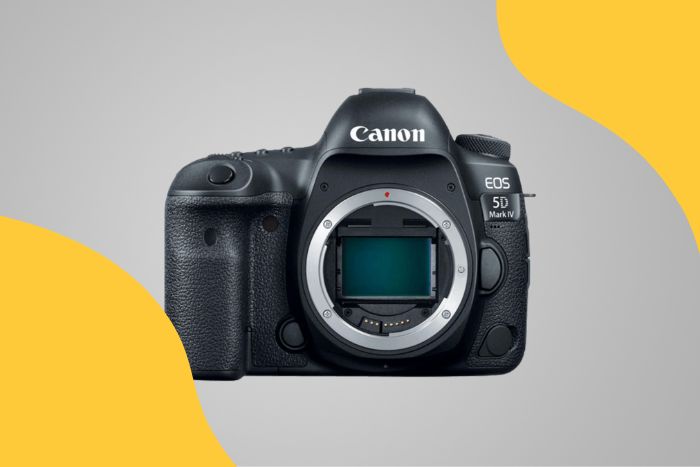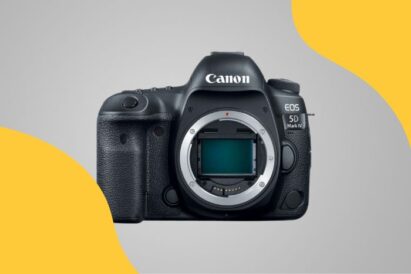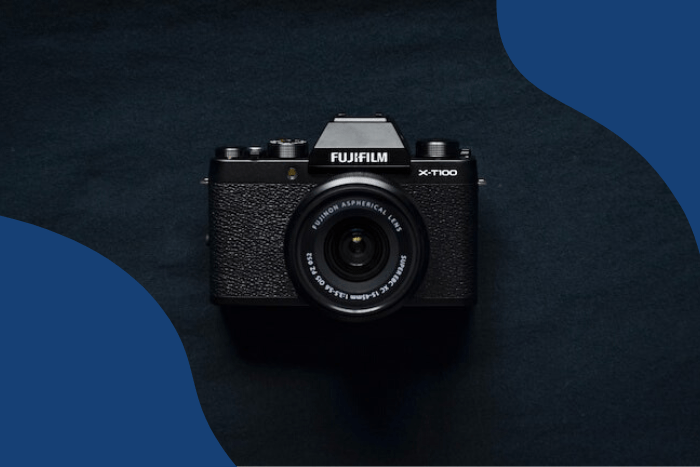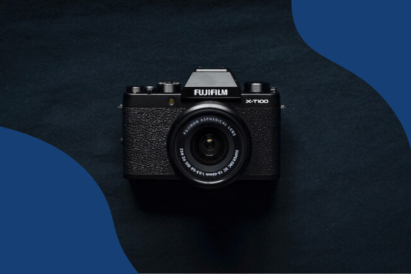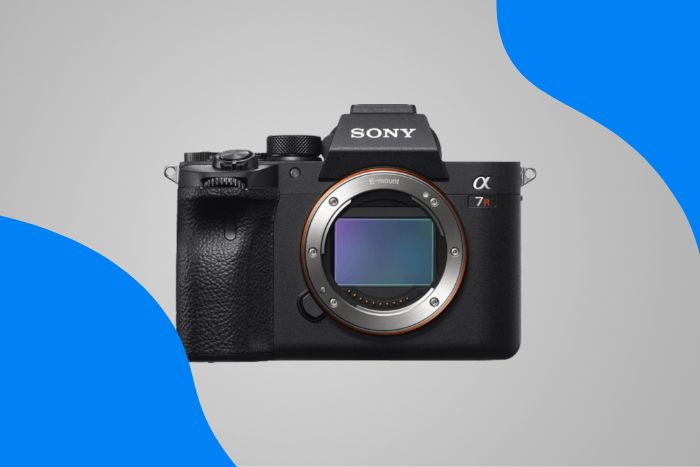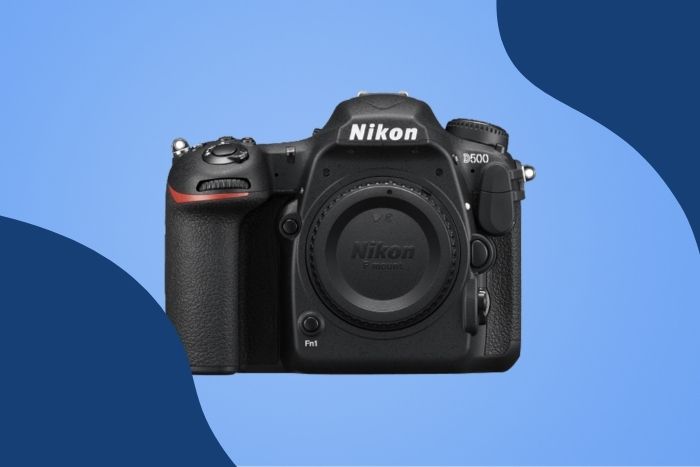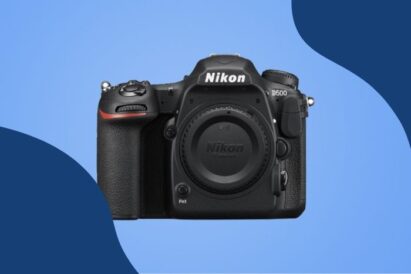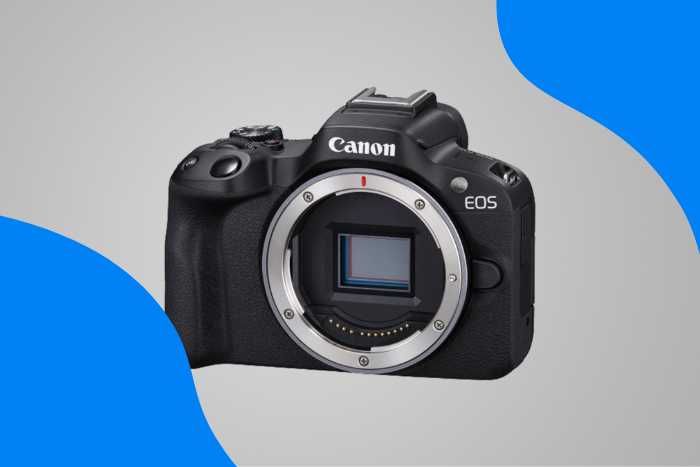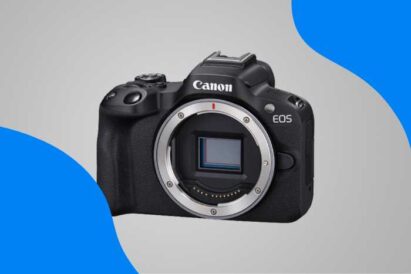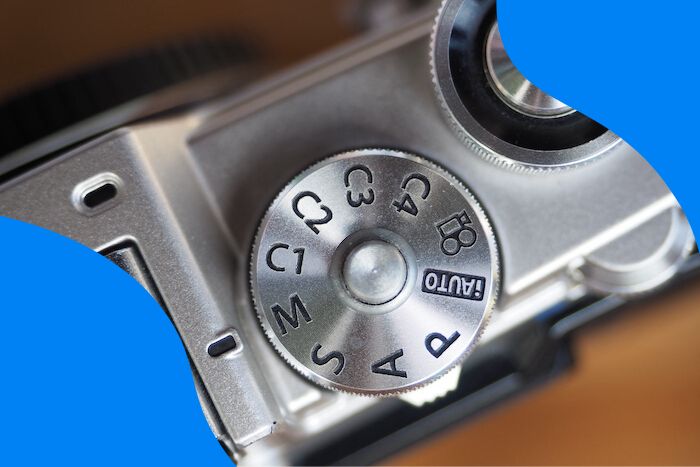When choosing the best podcast camera, you should look for something that can record Full HD at a frame rate of 24 or 30 fps (frames per second). Higher frame rates at 4K can lead to buffering and choppy video without fast Wi-Fi.
This is why we recommend the Canon VIXIA HF G50 camcorder as our top choice. But keep reading for many more options, from mirrorless cameras to webcams.

Canon VIXIA HF G50 Camcorder
What Are the Best Podcast Cameras?
Apart from frame rate, you should also bear in mind a few other considerations:
- Ease of use
- Ports for external microphone and headphones
- Long battery life
- Memory capacity
- Screen size and resolution
Some cameras offer slow motion, a self-timer, image stabilization, remote control, and beauty modes. But these are only “nice-to-have” rather than “need-to-have.”
Once you know the basic requirements, you can think about the type of camera you want. The cheap and cheerful option is a smartphone or webcam—either built-in or external.
But for better audio and video quality, you need a camcorder or hybrid camera. Hybrid mirrorless models offer the best video quality and ease of use.
But you can always make do with a more affordable compact camera, DSLR, or GoPro.
You can use two cameras at different angles if you’re podcasting with guests or a co-host. But that means a more complicated setup with an XLR microphone and headphones.
We start with a quick summary of all the best options for video podcasting. (Note that “p” also stands for frames per second at times)

- 4K/30p Ultra HD (UHD) footage
- Wide-angle 20x optical zoom
- 5-axis image stabilization
- 0.4 to 1200x slow and fast motion

- Good value and low-light performance
- 20x optical zoom
- Hybrid optical image stabilization
- Built-in Wi-Fi

- Full HD 1080p AVI footage at 15 fps
- 16x zoom
- Built-in fill light
- 3-inch, 270-degree rotation LCD
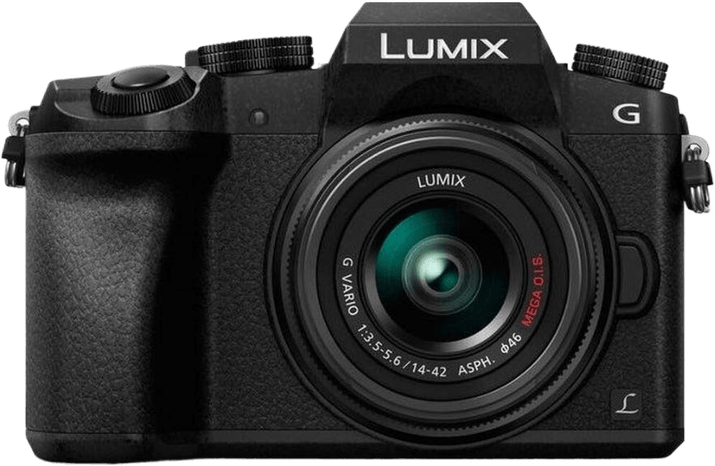
- A fast and accurate autofocus
- Helpful focus peaking and zebra highlight warnings
- An external microphone input
- 4K stills mode
- Excellent 4K video and LCD resolution
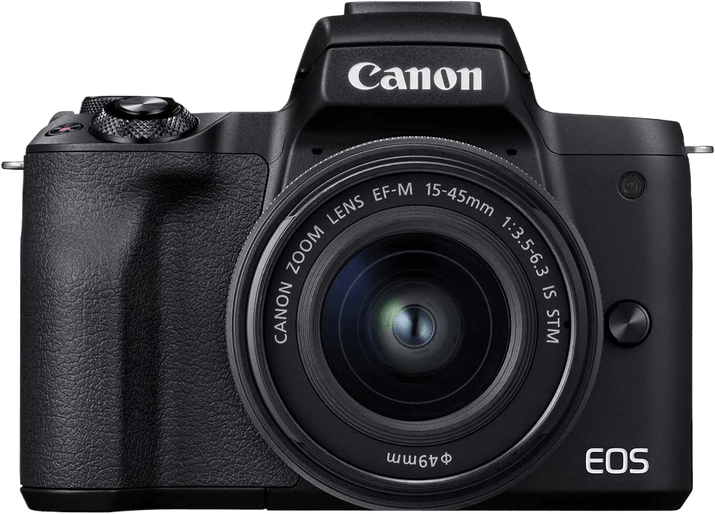
- Strong sensor resolution
- 4K and Full HD video options
- Time-lapse recording
- External mic port
- Webcam functionality

- Astonishing autofocus
- 5-axis in-body image stabilization reduces camera shake
- Silent shooting
- Terrific battery life
- Small, lightweight camera
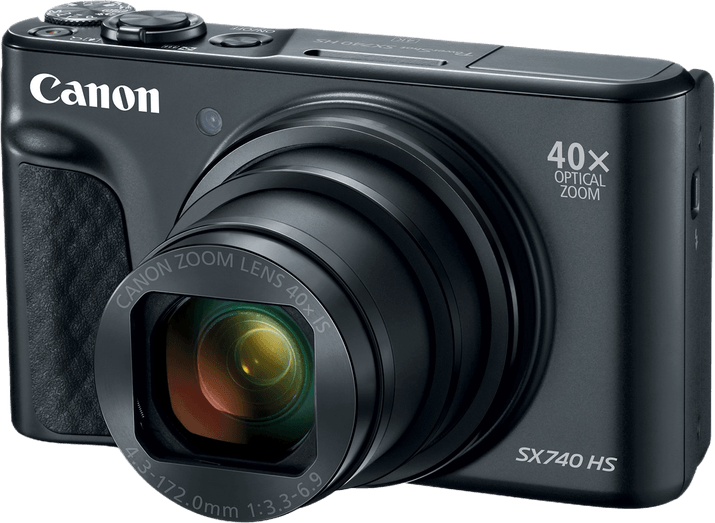
- User-friendly camera
- 40x optical zoom
- Excellent 4K video
- Vlogger-friendly screen

- Compact and lightweight
- Good video up to 1080/60p
- Built-in Wi-Fi
- Long battery life
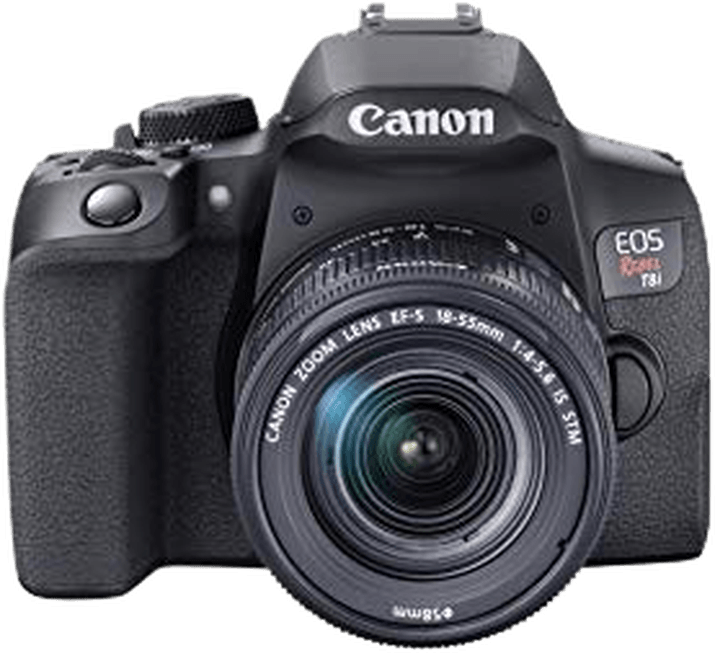
- Excellent image quality
- Face and eye-detection AF
- Great ISO range and low-light performance
- 4K/25p and Full HD/120p video
- Webcam functionality and remote shooting with smartphone

- High 23 MP resolution for photos
- HyperSmooth image stabilization for photos and videos
- The body is robust and waterproof
- Excellent Wi-Fi connectivity settings
- Incredible 5.2K video resolution

- 4K Ultra HD video
- HDR support
- Automatic light correction
- Noise cancellation
11 Best Podcast Cameras in Detail
Now let’s dive into a detailed analysis of each camera. We divided this into five sections to go into more detail:
Best Camcorders for Podcasting
Camcorders and video cameras provide high-quality video. They offer better mics and preamps to boost the audio signal than still cameras.
Some even come with XLR inputs for an XLR microphone. But some tend to be expensive and generally have limited battery life.
1. Canon VIXIA HF G50 Camcorder

| Brand |
Brand
Canon
|
| Camera Type |
Camera Type
Camcorder
|
| Sensor Format |
Sensor Format
Large-format CMOS
|
| Image Stabilization |
Image Stabilization
Yes
|
| Max Video Resolution |
Max Video Resolution
4K
|
| Max Video Frame Rate |
Max Video Frame Rate
30p
|
| Screen Size |
Screen Size
3 inches
|
- 4K/30p Ultra HD (UHD) footage
- Wide-angle 20x optical zoom
- 5-axis image stabilization
- 0.4 to 1200x slow and fast motion
- Not a cheap option
- Average touchscreen navigation
- Only takes SD memory cards
- A dated look and design
The Canon VIXIA HF G50 is the best video camera for podcasting (or “vodcasting”) on our list. It offers impressive features and performance.
It’s also reliable enough for content creators looking to produce high-quality podcast episodes. Podcaster Joe Rogan uses the VIXIA HF G40. But this goes one better with resolution.
This Canon camcorder delivers exceptional video quality, capturing footage up to 4K/30p. This makes it easy to produce visually appealing podcasts.
The advanced CMOS sensor performs well even in low light. And it ensures noise-free output.
One feature of the HF G50 is its powerful 20x optical zoom lens. This allows for different framing options, including close-ups and wide-angle perspectives.
The lens also has an advanced five-axis image stabilization system. This minimizes camera shake and ensures smooth and steady footage.
The camera’s dual SD memory card slots provide ample storage capacity. It allows extended recording sessions without interruption.
It also offers a range of manual controls and adjustable settings. So users have creative freedom and control over their video production.
Finally, the touchscreen and intuitive controls make watching and controlling recordings easy. That’s why the VIXIA HF G50 is fantastic for beginner podcasters.
2. Panasonic HC-V770 HD Camcorder

| Brand |
Brand
Panasonic
|
| Camera Type |
Camera Type
Camcorder
|
| Sensor Format |
Sensor Format
1/2.3-inch BSI CMOS
|
| Image Stabilization |
Image Stabilization
Yes
|
| Max Video Resolution |
Max Video Resolution
Full HD
|
| Max Video Frame Rates |
Max Video Frame Rates
120p
|
| Screen Size |
Screen Size
3 inches
|
- Good value and low-light performance
- 20x optical zoom
- Hybrid optical image stabilization
- Built-in Wi-Fi
- Limited sensor size
- No 4K video
- Soft slow-motion footage
The Panasonic HC-V770 is a highly capable camera for podcasting. It offers impressive features and functionality for an affordable price.
This camcorder captures videos in Full HD, delivering sharp, detailed footage. Its advanced BSI sensor performs well in low-light environments.
That ensures clear and vibrant visuals even in challenging lighting conditions. And the camera’s 20x optical zoom lets you choose between close-ups and wide-angle shots.
Another feature of this Panasonic camcorder is its built-in Wi-Fi. This enables remote control and easy file transfer for editing and sharing.
The camera’s image stabilization (IS) system reduces camera shake. This results in smooth, steady recordings. And its five-axis hybrid optical IS further enhances stability and image quality.
Image stabilizers are important for podcasting. That’s because they help achieve a professional, polished look.
The HC-V770 also offers a range of manual controls and custom settings. And its lightweight and compact design makes it portable and convenient for on-the-go podcasting.
3. Kicteck HD Video Camera

| Brand |
Brand
Kicteck
|
| Camera Type |
Camera Type
Camcorder
|
| Sensor Format |
Sensor Format
CMOS
|
| Image Stabilization |
Image Stabilization
No
|
| Max Video Resolution |
Max Video Resolution
Full HD
|
| Max Video Frame Rate |
Max Video Frame Rate
120p (640 x 480)
|
| Screen Size |
Screen Size
3 inches
|
- Full HD 1080p AVI footage at 15 fps
- 16x zoom
- Built-in fill light
- 3-inch, 270-degree rotation LCD
- Limited sharpness
- Problems focusing
- Takes time to detect SD card
- Limited battery life
The Kicteck HD camcorder is a budget-friendly option for podcasting. While it may not have all the features of higher-end models, it can still be suitable for beginners.
It captures videos in Full HD, providing satisfactory podcasting image quality. Its 16x digital zoom allows basic framing adjustments. But some image quality may be lost if used extensively.
Another feature is its external mic input. This is essential for achieving better audio quality in podcast recordings. By connecting an external microphone, users can ensure clear, crisp audio.
It also includes a three-inch flip-out screen. This provides a convenient way to frame shots and navigate menus. But the screen’s resolution isn’t very high, meaning limited clarity and detail.
The Kicteck HD camcorder lacks some advanced features and may not excel in low light. But it can still be a viable option for podcasters on a budget or those just starting.
It’s easy to use, lightweight, and compact. So it’s suitable for portable podcasting setups.
Best Mirrorless Cameras for Podcasts
Mirrorless cameras offer excellent resolution. They’re also good for both stills and internal or external video recording.
Sony and Panasonic cameras let you choose from a wide range of compatible lenses. But it’s more limited for Nikon and Canon models.
But mirrorless cameras often have a recording limit of 30 minutes. This is due partly to overheating issues. But it’s also due to higher import taxes (duties) for cameras that exceed this!
Battery life may be limited, too. But some can be charged while plugged into a computer via a USB cable.
4. Panasonic Lumix DMC-G7

| Camera Type |
Camera Type
|
| Sensor Format |
Sensor Format
|
| Lens Mount |
Lens Mount
Micro 4/3
|
| Megapixels |
Megapixels
16 MP |
| Autofocus Points |
Autofocus Points
49 |
| In-body Stabilization |
In-body Stabilization
|
| Max Video Resolution |
Max Video Resolution
|
| Max Video Frame Rate |
Max Video Frame Rate
60 p
|
| Screen Size |
Screen Size
|
- A fast and accurate autofocus
- Helpful focus peaking and zebra highlight warnings
- An external microphone input
- 4K stills mode
- Excellent 4K video and LCD resolution
- No phase-detection autofocus
- Low continuos burst of 7 fps
- No in-body image stabilization for camera shake
- Controls are a little over-complicated
- Short battery life with video recording
The Panasonic Lumix DMC-G7 is an excellent Micro Four Thirds camera for video podcasts. It offers superb image quality and a range of features, making it a standout choice.
The camera’s flip-out screen lets you see yourself while recording. This helps you stay framed properly and maintain eye contact with your audience.
This mirrorless camera also supports 4K video recording. So you can capture videos with stunning clarity and detail.
This is especially good for creating professional-looking podcast episodes. And it also lets you connect an external microphone for enhanced audio.
What sets the Lumix G7 apart is its intuitive controls and user-friendly interface.
If you’re new to podcasting, the menus are easy to navigate. Plus, on-screen guides help you change settings like exposure and focus.
5. Canon EOS M50 Mark II

| Camera Type |
Camera Type
|
| Sensor Format |
Sensor Format
|
| Lens Mount |
Lens Mount
Canon EF-M
|
| Megapixels |
Megapixels
24 MP |
| Autofocus Points |
Autofocus Points
143 |
| In-body Stabilization |
In-body Stabilization
|
| Max Video Resolution |
Max Video Resolution
|
| Max Video Frame Rate |
Max Video Frame Rate
120 p
|
| Screen Size |
Screen Size
|
- Strong sensor resolution
- 4K and Full HD video options
- Time-lapse recording
- External mic port
- Webcam functionality
- 4K video is cropped
- No environmental sealing
- No sensor-shift image stabilization
- Disappointing battery life
The Canon EOS M50 Mark II is an APS-C camera that’s exceptional for podcasting. Its powerful features and user-friendly design make it well-suited for content creators.
This mirrorless camera excels in video quality, offering 4K video with good stabilization. This ensures that your podcast episodes show incredible detail and clarity.
The camera also boasts Dual Pixel AF (autofocus). So it delivers fast and accurate focusing, keeping you sharp throughout your recordings.
One of its practical benefits is its ability to connect an external microphone. This allows for superior audio quality, ensuring your podcasts sound professional and clear.
The M50 Mark II also offers a variety of creative shooting modes and filters. This lets you add visual flair and customization to your podcast videos.
The flip-out touchscreen is another handy feature for convenient framing and intuitive control. And it has built-in Wi-Fi and Bluetooth for easy sharing and remote control.
If you’re new to podcasting, the camera’s user-friendly interface and controls make its use a breeze. It’s also compact and lightweight. So it’s portable enough for on-the-go podcasting.
6. Sony a6600

| Camera Type |
Camera Type
|
| Sensor Format |
Sensor Format
|
| Lens Mount |
Lens Mount
Sony E
|
| Megapixels |
Megapixels
24.2 MP |
| Autofocus Points |
Autofocus Points
425 |
| In-body Stabilization |
In-body Stabilization
|
| Max Video Resolution |
Max Video Resolution
|
| Max Video Frame Rate |
Max Video Frame Rate
30 p
|
| Screen Size |
Screen Size
|
- Astonishing autofocus
- 5-axis in-body image stabilization reduces camera shake
- Silent shooting
- Terrific battery life
- Small, lightweight camera
- Slow buffer speeds
- Controls feel cramped with large hands
- Limited touchscreen controls
- No pop-up flash
- Rolling shutter recording video
The Sony a6600 is a powerhouse camera for podcasting. It offers exceptional features and performance for creating professional content.
This mirrorless camera can record in 4K resolution with stunning detail and clarity. And its image stabilization minimizes camera shake, resulting in smooth and steady footage.
Its advanced autofocus system ensures precise and reliable subject tracking. So you stay in focus throughout your podcast episodes.
Another advantage of this Sony camera is its long battery life. This allows for extended recording sessions without interruption.
The camera’s flip-out touchscreen provides flexible framing and convenient control. So you can watch your shots and navigate the menus with ease.
There’s also a socket for an external microphone. And the a6600 boasts a durable and ergonomic design. This ensures comfortable handling during prolonged use.
Its comprehensive range of customizable settings and functions cater to advanced users. So they have extensive control over the recording process.
This is Sony’s flagship APS-C mirrorless camera with every available feature. So it’s not a cheap option. But if you’re on a tight budget, you can always drop down to the a6400 or a6000.
Best Bridge Camera for Podcasts
A bridge camera (“superzoom”) is just a mirrorless compact camera with a wide zoom range. It’s a smaller, lighter, and cheaper option. But it comes at the expense of sensor size and resolution.
7. Canon PowerShot SX740 HS

| Camera Type |
Camera Type
|
| Sensor Format |
Sensor Format
|
| Lens Mount |
Lens Mount
Fixed
|
| Megapixels |
Megapixels
21 MP |
| Autofocus Points |
Autofocus Points
9 |
| In-body Stabilization |
In-body Stabilization
|
| Max Video Resolution |
Max Video Resolution
|
| Max Video Frame Rate |
Max Video Frame Rate
60 p
|
| Screen Size |
Screen Size
|
- User-friendly camera
- 40x optical zoom
- Excellent 4K video
- Vlogger-friendly screen
- Limited image quality
- Shutter lag
- No Electronic Viewfinder (EVF)
- No touchscreen
The Canon Powershot SX740 is a compact camera that offers a decent option for podcasting. It works well for vlog-style content or on-the-go recordings.
While it may not have all the advanced features of camcorders, it is convenient and portable. And it offers Full HD, providing image quality good enough for podcasting purposes.
Its 40x optical zoom lens allows for versatile framing options. But the camera’s digital zoom may result in losing image quality.
And with a flip-up screen, this compact Canon camera enables easy framing and monitoring. This is great for video podcasting as it helps ensure eye contact with the audience.
It doesn’t have a mic port. But it does have a built-in stereo microphone with decent audio quality. Though, if there’s a lot of background noise, using an external microphone is better.
The SX740 is compact and lightweight. So it’s highly portable and suitable for on-the-go podcasting.
And its user-friendly interface and straightforward controls allow easy operation and quick setup. This is especially handy for beginners.
Best DSLRs for Podcasts
DSLRs are still very popular, despite the mirrorless camera revolution. And if you prefer an optical viewfinder, they represent a familiar and affordable option.
8. Nikon D5500

| Camera Type |
Camera Type
|
| Sensor Format |
Sensor Format
|
| Lens Mount |
Lens Mount
Nikon F DX
|
| Megapixels |
Megapixels
24.2 MP |
| Autofocus Points |
Autofocus Points
39 |
| In-body Stabilization |
In-body Stabilization
|
| Max Video Resolution |
Max Video Resolution
|
| Max Video Frame Rate |
Max Video Frame Rate
60 p
|
| Screen Size |
Screen Size
|
- Compact and lightweight
- Good video up to 1080/60p
- Built-in Wi-Fi
- Long battery life
- No aperture control, Auto ISO or zebra stripes when filming
- Some static in low light
- Recording limited to 10 or 20 minutes
- No headphone jack
The D5500 is a light and versatile DX-format DSLR that can be great for video podcasts. The excellent image quality and advanced features let you create professional-looking videos.
This Nikon DSLR captures videos in Full HD resolution, delivering sharp and detailed footage. Its APS-C sensor performs well even in challenging lighting conditions.
And the camera’s 24.2 MP (megapixel) resolution allows ample room for cropping or post-processing.
One notable feature of the D5500 is its articulating screen. It can be tilted and rotated to different angles. This flexibility enables easy framing and monitoring for vloggers and podcasters.
The camera also offers comprehensive manual control over various settings. This lets users customize their video output.
Plus, it also has a microphone input. Again, this is essential for achieving better audio quality in podcast recordings.
The Nikon D5500 also has access to a wide range of compatible lenses. They offer flexibility in achieving different perspectives and styles for video podcasting.
Its lightweight and compact design makes it portable and suitable for on-the-go shooting. And it has a user-friendly interface and controls that cater to beginners and intermediates.
This DSLR camera lacks some advanced video features like 4K or image stabilization. But it still provides reliable performance and excellent image quality.
9. Canon EOS Rebel T8i / 850D

| Camera Type |
Camera Type
|
| Sensor Format |
Sensor Format
|
| Lens Mount |
Lens Mount
Canon EF/EF-S
|
| Megapixels |
Megapixels
24 MP |
| Autofocus Points |
Autofocus Points
45 |
| In-body Stabilization |
In-body Stabilization
|
| Max Video Resolution |
Max Video Resolution
|
| Max Video Frame Rate |
Max Video Frame Rate
60 p
|
| Screen Size |
Screen Size
|
- Excellent image quality
- Face and eye-detection AF
- Great ISO range and low-light performance
- 4K/25p and Full HD/120p video
- Webcam functionality and remote shooting with smartphone
- Fiddly control dials
- Less reliable AF in video mode
- Small optical viewfinder display
- Cropped 4K video
The Canon EOS Rebel T8i (EOS 850D or EOS Kiss X10i) is a fantastic podcast video camera. It offers a great balance of features and affordability.
Its impressive image quality and advanced features help produce high-quality output. It captures videos in Full HD and 4K, delivering sharp, detailed footage.
The APS-C sensor performs exceptionally well. It provides excellent low-light performance and vibrant colors. And the 24.2 MP resolution allows ample detail and flexibility in post-processing.
One standout feature of this Canon DSLR is the articulating touchscreen. This can be tilted and rotated for easy framing and monitoring. It works well for video podcasting.
It also lets you capture shots from various angles and watch real-time recordings. Plus, the camera’s compact and lightweight design helps if you shoot away from home.
The Rebel T8i boasts Canon’s Dual Pixel CMOS AF system. It provides fast and accurate focusing during video recording.
The camera also offers manual control over various settings. So users can customize their video output. And it has an external mic port to capture professional-quality audio for podcasts.
Lastly, Canon has a wide range of compatible STM lenses (EF and EF-S). So you have flexibility in achieving different perspectives and styles for video podcasting.
Best Action Camera for Podcasts
Action cameras aren’t necessarily designed for use as webcams. But GoPro offers the handy option of a live-streaming service. That lets you record to GoPro.com without a memory card!
10. GoPro Hero10 Black

| Megapixels |
Megapixels
23 MP |
| Field of View |
Field of View
155 |
| In-body Stabilization |
In-body Stabilization
Electronic Image Stabalization
|
| Max Video Resolution |
Max Video Resolution
|
| Max Video Frame Rate |
Max Video Frame Rate
120p (4K)
|
| Screen Size |
Screen Size
2.27-inches
|
Best External Webcam for Podcasts
External USB webcams like the Logitech Brio or Logitech C920 HD Pro Webcam are popular for live streaming. Gamers on Twitch often use them. (Twitch is an American video service that streams video games and esports competitions.)
Webcams offer a simple, plug-and-play solution via a USB cable and cost less than a camera. But they’re not portable. So rule them out if you do in-person interviews or co-hosting.
11. Logitech Brio 4K Webcam

| Camera Type |
Camera Type
Webcam
|
| Max Video Resolution |
Max Video Resolution
4K
|
| Max Video Frame Rate |
Max Video Frame Rate
90p (720p)
|
| Field of View FOV |
Field of View FOV
65, 78, 90 degrees (diagonal FOV)
|
| Connection |
Connection
USB-A, USB-C compatible with adapter (not included)
|
- 4K Ultra HD video
- HDR support
- Automatic light correction
- Noise cancellation
- Expensive
- Poor build quality in mount and lens cover
- 4K recording is jerky
- Best to install Logi Tune and Logitech Capture software apps
The Logitech Brio webcam is a hassle-free and affordable choice for video podcasting. It provides excellent image quality and advanced features in a compact package.
It captures videos in stunning 4K Ultra HD, delivering exceptional clarity and detail. And it incorporates advanced technologies for improved video performance.
This Logitech webcam supports HDR (High Dynamic Range) technology. This enhances the color and contrast for a more vibrant and dynamic experience.
And its advanced optics and AF system ensure sharp and precise focus, even in low light. So you get professional-looking videos for your podcast episodes.
It offers a wide, adjustable field of view to capture more of your surroundings or film several people. And it gives you flexibility in framing and composition.
It also has automatic light correction. This optimizes the exposure and balances the lighting in your recordings. So it works even in challenging lighting situations.
And the webcam features a built-in microphone with noise cancellation for clear and crisp podcast audio. But you can still use an external microphone for optimal audio quality.
Finally, the Brio is compatible with various video conferencing and recording software. So it’s easy to integrate into your podcast workflow.
And its plug-and-play functionality ensures hassle-free setup and operation!
Our Verdict
Whatever your budget, the best podcast camera must offer high-quality video and audio. It’s easy to lose viewers if your video podcasts don’t look professional enough.
This means a decent camera, lighting, and audio setup are essential. That’s why we recommend the Canon VIXIA HF G50.
Camcorders and video cameras are designed to capture audio and video. But mirrorless cameras offer a high-quality, versatile alternative.
And plenty of more affordable options exist if your budget doesn’t quite stretch that far. These include DSLRs, bridge cameras, and even external webcams.

Canon VIXIA HF G50 Camcorder
Best Podcast Camera FAQs
These are our answers to frequently asked questions about the best podcast cameras.
What Camera Do Most Podcasters Use?
Many podcasters use the Logitech C920 HD Pro Webcam as their best podcast camera. It offers high-quality video resolution, built-in microphones, and easy plug-and-play functionality.
Its affordability and versatility make it a popular choice among content creators. But it struggles in low light, and the Logitech Brio is a better bet overall.
What Equipment Should I Use for a Podcast?
You’ll need a good microphone, closed-back headphones, a pop filter, and a stand or boom arm. You’ll also need an audio interface, a basic acoustic treatment, and recording software.
With two or more guests, you’re better off using an XLR microphone and studio headphones.
What Camera Do YouTubers Use for Podcasts?
Many YouTubers use the Sony a6400 or the Canon EOS M50 Mark II for recording podcasts.
They offer excellent video, a choice of lenses, AF tracking, and flip-out screens. These make them popular options among content creators.
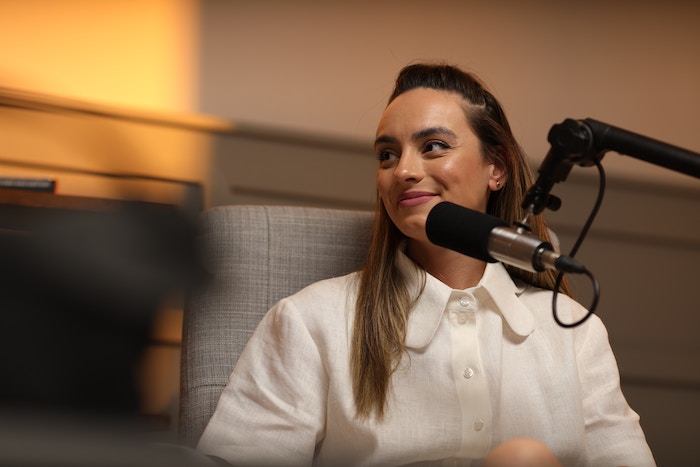
Is a GoPro a Good Camera for Podcasting?
GoPro video cameras are not the best choice for podcasting. This is due to their wide-angle lenses and limited audio capabilities. They are durable, versatile extreme sports action cameras.
It’s better to use cameras with good low-light performance, a choice of lenses, and better audio. These maximize the video and audio quality.
Can I Use a Webcam for a Podcast?
Yes, you can use a webcam for a podcast, especially if you’re focusing on video content. Webcams like the Logitech C920 offer decent video quality and built-in microphones.
But for higher production values, it’s worth buying a camera. It also helps to have external microphones and a custom lighting setup.
Do You Need Two Cameras for a Podcast?
No, it’s not necessary for every podcast. One camera can suffice by capturing the main host or the primary focus of the discussion.
But two cameras can enhance the visual experience. It enables different camera angles or multi-person discussions.


